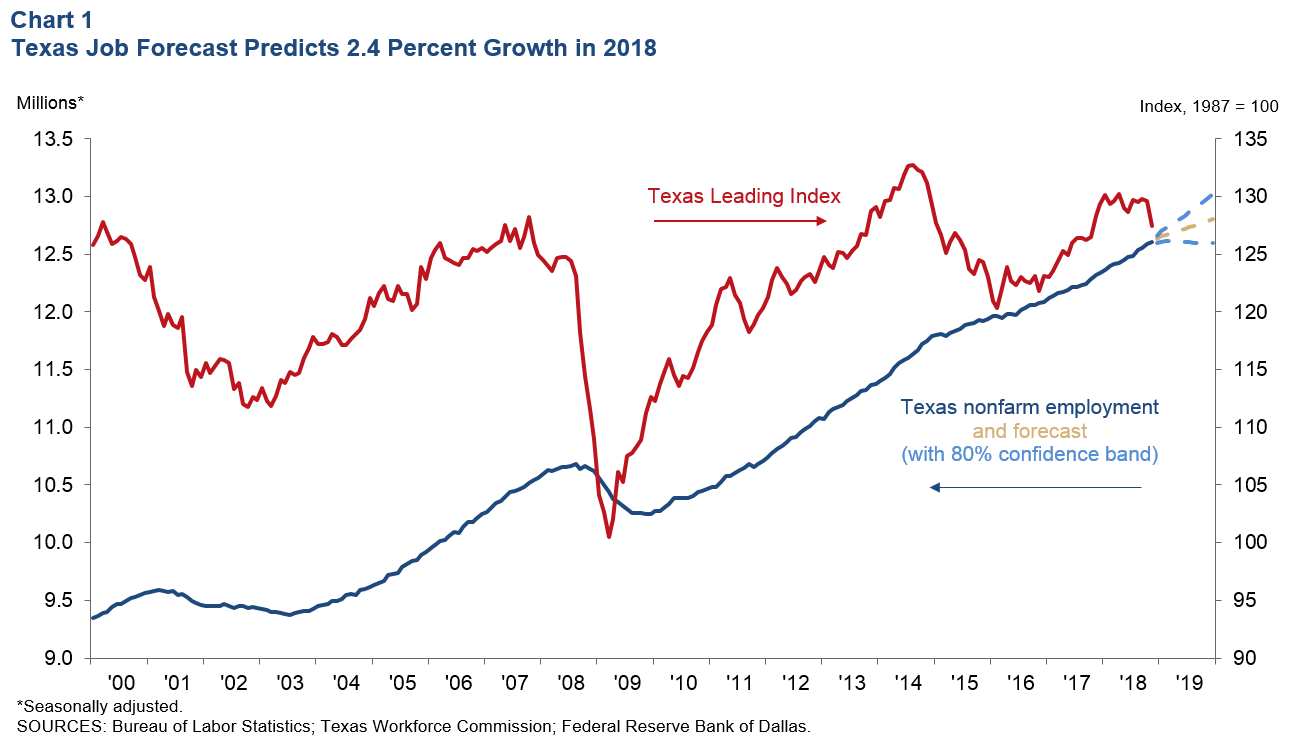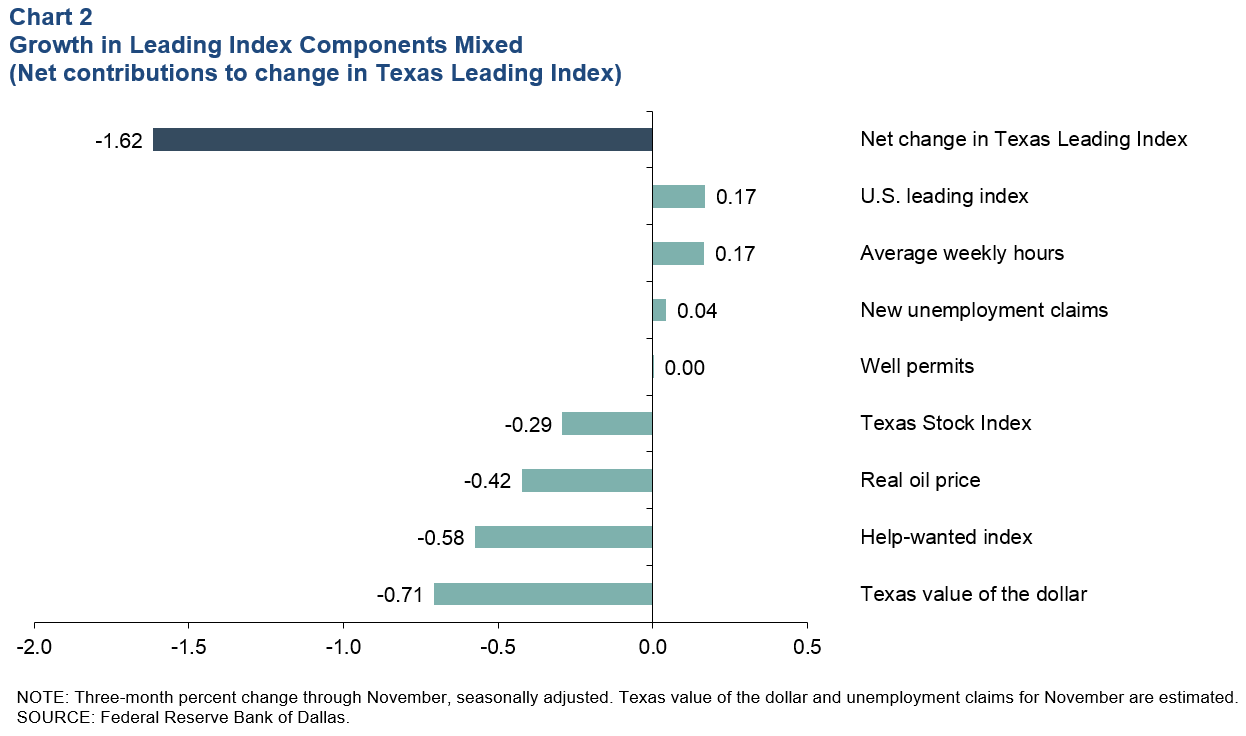Texas Employment Forecast

Incorporating a downward revision to second quarter job growth, November job growth of 1.4 percent and a decline in the leading index, the Texas Employment Forecast suggests jobs will grow 2.4 percent this year (December/December), with an 80 percent confidence band of 2.2 to 2.6 percent. Based on the forecast, 293,000 jobs will be added in the state this year, and employment in December 2018 will be 12.6 million (Chart 1).
“Early benchmark data released late November revised down Texas job growth from 3.5 percent in the second quarter to 1.9 percent. More recently, job growth slowed in November due mostly to a slowing in the service-producing sectors of leisure and hospitality, health care and financial services.” said Keith R. Phillips, Dallas Fed assistant vice president and senior economist. “The recent sharp decline in oil prices and strength in the international value of the dollar means slowing is likely for the energy and manufacturing sectors—which grew at a strong pace for most of this year.”
The Dallas Fed’s Texas Leading Index decreased 1.6 percent over the three months ending in November (Chart 2). Growth was mixed across components, with increases in the U.S. leading index and in average weekly hours worked in manufacturing offsetting some of the declines in other indicators. A significant increase in the Texas value of the dollar and declines in help wanted advertising, oil prices and the stock prices of Texas companies were significant negative contributions to the index change. Overall the index suggests some slowing of job growth in the months ahead with potential headwinds coming from weakening in the energy and export sectors and in overall earnings growth of Texas based companies.


Next release: December 21, 2018
Methodology
The Dallas Fed Texas Employment Forecast projects job growth for the calendar year and is estimated as the 12-month change in payroll employment from December to December. The forecast reported above is a point estimate with 80 percent confidence bands; in other words, the true forecast lies within the bands on Chart 1 with 80 percent probability.
The Dallas Fed Texas Employment Forecasting Model is based on a transfer function that utilizes past changes in state employment along with past changes in the Dallas Fed Texas Leading Index (TLI). Changes in the TLI have an impact on employment with a lead time of three months, and the effect dies out slowly over time. The regression coefficients on lagged changes in employment and the TLI are highly statistically significant, and the model as a whole has been accurate relative to other forecasters over the past two decades.
The forecasting model has been in use at the Dallas Fed since the early 1990s, and the employment forecast has been published in the Western Blue Chip Economic Forecast (WBCF) since 1994. Phillips and Lopez (2009) show that the model has been the most accurate in forecasting Texas job growth relative to other forecasters in the WBCF. In particular, the model had the lowest root mean squared error and has been the closest to the actual the most times (nine of the last 17 years) out of five forecasters that have consistently participated in the survey.
For more details about the model and its performance, see “An Evaluation of Real-Time Forecasting Performance Across 10 Western U.S. States,” by Keith R. Phillips and Joaquin Lopez, Journal of Economic and Social Measurement, vol. 34, no. 2–3, December 2009.
Contact Information
For more information about the Texas Employment Forecast, contact Keith Phillips at keith.r.phillips@dal.frb.org.